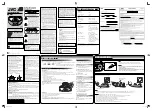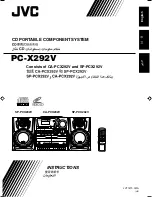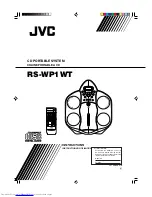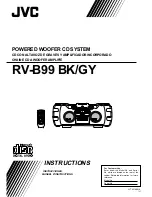
Model G0634Z/G0634XP (Mfd. Since 01/20)
-47-
Symptom
Possible Cause
Possible Solution
Tables are hard
to adjust.
1. Table gibs are too tight.
1. Adjust table gibs (
Page 59
).
Tables do not
lock.
1. Table lock levers too high or too low.
1. Adjust lock nuts and bolts.
Table (Jointer)
Symptom
Possible Cause
Possible Solution
Excessive
snipe (gouge in
the end of the
board that is
uneven with the
rest of the cut).
1. Outfeed table is set too low.
2. Operator pushing down on trailing end of
workpiece.
3. Workpiece is not supported as it leaves the
planer.
1. Align outfeed table with inserts at top dead center
(
Page 24
).
2. Reduce/eliminate downward pressure on trailing end
of workpiece.
3. Support the workpiece as it leaves the outfeed end of
the planer.
Workpiece
stops/slows in
the middle of
the cut.
1. Taking too heavy of a cut.
2. Table not parallel with head casting.
3. Pitch and glue build up on planer
components.
1. Take a lighter cut.
2. Adjust the table so it is parallel to the head casting
(
Page 54
).
3. Clean the internal cutterhead components with a pitch/
resin dissolving solvent.
Chipping
(consistent
pattern).
1. Knots or conflicting grain direction in wood.
2. Nicked or chipped carbide insert.
3. Taking too deep of a cut.
1. Inspect workpiece for knots and grain direction; only
use clean stock.
2. Rotate/replace affected insert (
Page 55
).
3. Take a smaller depth of cut. (Always reduce
cutting depth when surface planing or working with
hardwoods.)
Fuzzy grain.
1. Wood may have high moisture content or
surface wetness.
2. Dull inserts.
1. Check moisture content and allow to dry if moisture is
too high.
2. Rotate/replace inserts (
Page 55
).
Long lines or
ridges that run
along the length
of the board.
1. Nicked or chipped inserts(s).
1. Rotate/replace inserts (
Page 55
).
Uneven insert
marks, wavy
surface, or
chatter marks
across the face
of the board.
1. Carbide inserts not installed evenly.
2. Worn cutterhead bearings.
1. Make sure carbide inserts do not have debris under
them; make sure inserts are torqued down evenly
(
Page 55
).
2. Replace cutterhead bearings.
Glossy surface.
(Planer)
1. Carbide inserts are dull.
2. Cutting depth too shallow.
1. Rotate/replace inserts (
Page 55
).
2. Increase the depth of cut.
Chip Marks
(inconsistent
pattern).
(Planer)
1. Chips aren't being properly expelled from the
cutterhead.
1. Use a dust-collection system
Board edge
is concave
or convex
after jointing.
(Jointer)
1. Board not held with even pressure on infeed
and outfeed table during cut.
2. Board started too uneven.
3. Board has excessive bow or twist along its
length.
4. Insufficient number of passes.
1. Hold board with even pressure as it moves over the
cutterhead.
2. Take partial cuts to remove the extreme high spots
before doing a full pass.
3. Surface plane one face so there is a good surface to
position against the fence.
4. It may take 3 to 5 passes to achieve a perfect edge,
depending on condition of board and depth of cut.
Cutting (Jointer and Planer)
Summary of Contents for G0634Z insert
Page 92: ......
















































